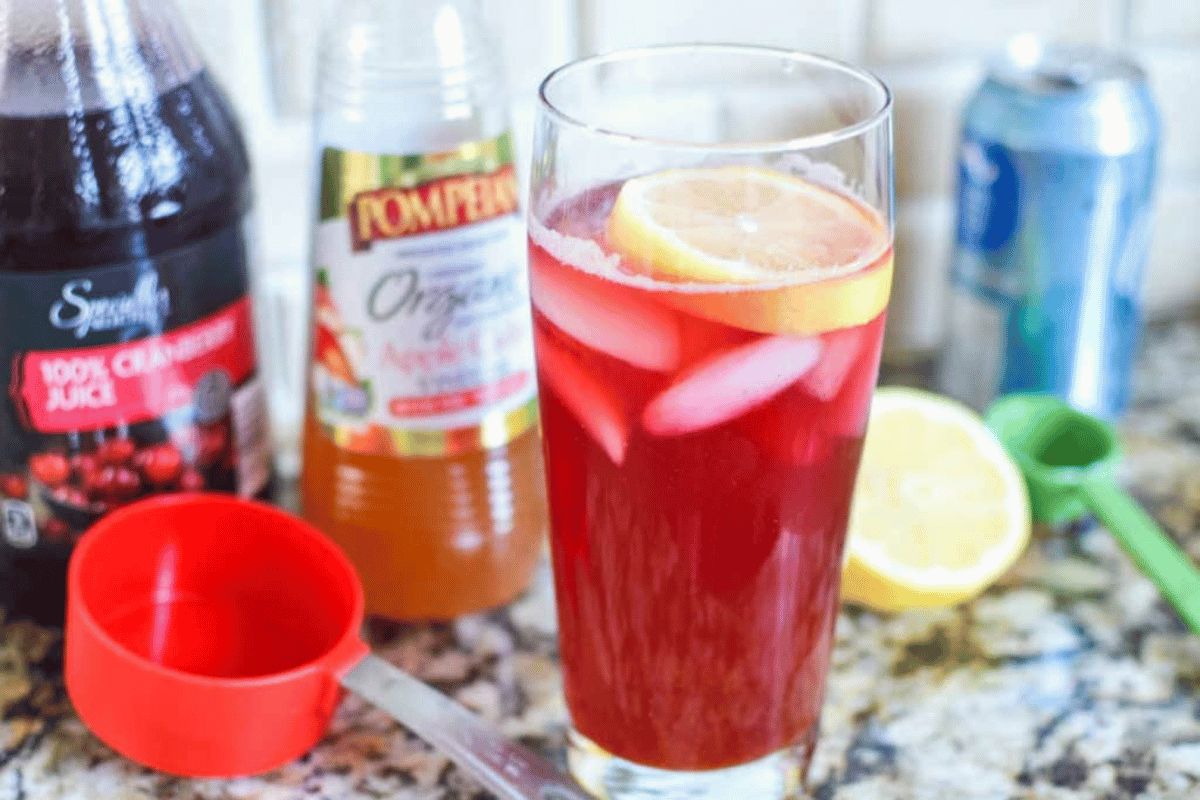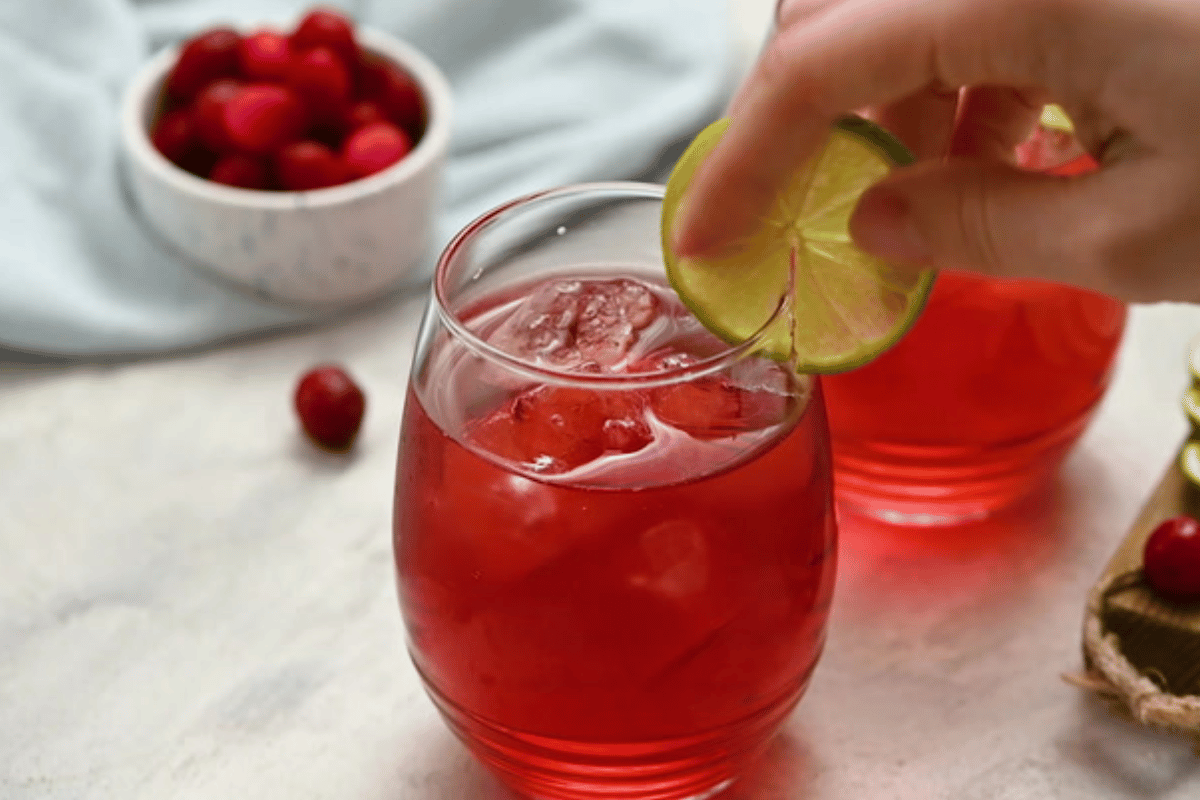Basically, weight management is very important in controlling diabetes. Proper weight can significantly improve blood sugar levels, decrease the risk of complications and enhance general health. Weight loss among diabetics is not just an issue of appearances—it plays a very vital role in managing the disease resulting to improved glucose control and decreased dependency on drugs.
Natural Remedies: Apple Cider Vinegar & Cranberry Juice Overview
Also, apple cider vinegar and cranberry juice are other natural remedies that have been found to help in losing weight as well as controlling diabetes. These natural products are considered as godsend because they are also affordable and require minimal intrusion into daily meal plans. To this end, the author discusses how these remedies could be used by diabetic patients towards achieving their goals of managing weight and attaining better overall health.

Apple Cider Vinegar Benefits for Diabetics
How Does Apple Cider Vinegar Help with Glucose Regulation and Weight Loss?
Apple Cider Vinegar (ACV) has acquired great repute for its prospective role in glucose regulation that extremely matters to people suffering from diabetes. It is argued that acetic acid contained in ACV improves insulin sensitivity since it helps reduce blood sugar responses after meals. A number of studies advise that it may promote regular satiety after few amount of caloric intake per meal at all plus increase metabolism hence affecting moderate weight loss.
A nutrition professor at Arizona State University named Dr Carol Johnston has conducted extensive research on the effects of vinegar on blood sugar levels. “The researchers believe vinegar works by inhibiting enzymes that digest starch” thereby reducing the number of calories entering the bloodstream after a carb-rich meal.
How to Incorporate Apple Cider Vinegar into Diabetes Diet
This calls for caution when incorporating apple cider vinegar in your diet if you are a person with type one or two diabetes mellitus. Here are some best practices to maximize its benefits safely:
Even before going big, try starting out small: Begin with a tiny amount such as one teaspoon of ACV mixed with water in a big glass and see how your system responds.
Choose raw, unfiltered varieties: Opt for unpasteurized, organic apple cider vinegar that is still full of healthy bacteria to obtain probiotic benefits.
The timing matters: Before meals is the best time to take ACV because it can increase insulin sensitivity and reduce blood sugar spikes.
Consult Your Healthcare Provider: This means that before you go ahead and include it in your diet, you should first visit your physician who will give you guidance on this so that you do not end up interfering with your drugs in case you are taking some or any existing health issues.
If these instructions are followed, diabetics can safely integrate apple cider vinegar into their diet and potentially gain from its glucose control and weight management features.

Cranberry Juice for Weight Loss as a help to Diabetics
Nutritional Benefits of Cranberry Juice in reducing Blood Sugar
Cranberry juice is good for diabetics because it has so many advantages especially when it is taken in its natural and unsweetened state. This tart drink is rich in phytonutrients such as quercetin, myricetin and chlorogenic acids that are antioxidants and have the potential to improve insulin sensitivity.
Research shows that these compounds can help to control blood sugar by enhancing insulin response and decreasing oxidized stress which affects most people suffering from diabetes. Moreover, cranberry juice has relatively low glycemic index compared to other juices making it better for maintaining stable levels of blood sugar.
Guidelines on How to Choose between Unsweetened or Sweetened Cranberry Juice
Choosing the right kind of cranberry juice (unsweetened vs sweetened) when using it as part of a diabetic diet is important to avoid worsening blood sugar. Here are some tips on using and selecting cranberry juice:
Go for Unsweetened Cranberry Juice: Always pick unsweetened cranberry juice as it does not contain any added sugars. The use of pure cranberries, without high sugar content causing blood sugar spikes is achieved through this solution.
Study the Labelling: Look out on labels that contain additives along with sugars. Some “natural” products do have lots of added sugars.
Dilution may be Useful: In case you find pure cranberry juice too sour, you can dilute it with water or combine with other low-glycemic fruit juices like apple cider vinegar but without adding any extra sweetness.
Control the Servings: Watch how much cranberry juice you drink per day. If you consume roughly 4-6 ounces a day then there will be enough benefits without overloading on fructose.
This careful consideration towards incorporating cranberry into a diet plan for diabetics can be very useful but must be done correctly. It is necessary to keep a check on the effects that it has on your blood sugar levels and adjust accordingly.
Optimal Results from Combining Apple Cider Vinegar and Cranberry Juice
Recipes and Methods to Safely Combine Both Ingredients in a Diabetic Diet
The combining of apple cider vinegar with cranberry juice can create an amazing synergy that magnifies their individual advantages for sugar control and weight loss. Here are some few recipes and methods for safely introducing these ingredients into your regular diet:
Morning Tonic: Begin your day by having a morning tonic composed of one spoonful each of apple cider vinegar mixed with unsweetened cranberry juice in a glass full of water. This mixture will help keep blood sugars steady all day.
Pre-Meal Drink: Take a small glass of this mixture about 30 minutes before eating times to promote digestion, hence, reducing the possibility of post-meal blood sugar spikes.
Salad Dressing: Use apple cider vinegar, a little bit of cranberry juice, olive oil, mustard, and herbs to make diabetic-friendly salad dressing. By adding taste to food, it also makes this meal nutritional and brings out both benefits of its constituents.
Timing and Dosage for Maximum Benefit
Combining apple cider vinegar with cranberry juice calls for proper timing and dosage; especially among diabetics who need careful management over their blood glucose levels:
Consistency is Key: Regular consumption is important for sustained benefits. Thus take them daily within the recommended limits in order not to suffer any side effects.
Avoid Excess: However beneficial they may be, it is important not to consume too much acidic substances. The dosages should be adhered to which are typically limited between two tablespoons per day if its apple cider vinegar or six t eight ounces on daily basis when it comes to cranberry juice.
Adjust as Needed: You should note how your body responds when you combine apple cider vinegar with cranberry juice. Therefore glucose levels must be checked more often together with adjustments made basing on glycemic response as well as advice from healthcare professionals.
These ingredients together are able to give people with diabetes a natural way of losing weight and improving their insulin sensitivity. However, like any other dietary change, it is important to consult your doctor before adding these to your meals in order to ensure that they are safe and effective for your health.

Additional Dietary Tips for Diabetics Who Want to Lose Weight
Using Apple Cider Vinegar and Cranberry Juice with Foods That Should be Eaten or Avoided.
Including apple cider vinegar and cranberry juice in your diet is one of the steps towards controlling diabetes and achieving weight loss. And in order to maximize the results, it is important to look at the bigger picture on dietary aspects. Here are some foods that we need to embrace and avoid;
Foods You Need To Embrace:
High-Fiber Foods: Leafy greens, nuts, seeds, whole grains are among those types of food which can help regulate blood sugar levels.
Lean Proteins: Incorporate lean meats, fish, plant based proteins for muscle maintenance and satiety support.
Healthy Fats: Avocadoes, olive oil as well as fatty fish rich in omega-3 fatty acids have great implications on heart health.
Low-Glycemic Fruits and Vegetables: Besides cranberries, focus on mostly fruit that do not cause any blood sugar spikes like berries, apples among other non-starchy vegetables.
Foods You Must Avoid:
High-Sugar Foods: Sugary snacks and beverages can increase blood sugar levels hence work against any efforts at losing weight.
Refined Carbohydrates : White breads , pastas , pastries disrupt glucose levels in body fluids leading to an accumulation of excess fat.
Trans Fats And High-Fat Processed Foods: These could worsen cardiac problems as they enhance insulin resistance .
The importance of a balanced diet together with regular physical activity
A balanced diet is important but physical activity is just as crucial for a diabetic seeking weight loss. Exercise improves insulin sensitivity thereby lowering blood glucose levels; this effect may be helpful especially when trying to lose extra kilos. A combination of aerobics including walking and swimming plus resistance activities meant to build muscles while increasing metabolism should be done.
Regular visits with a nutritionist can help design a meal plan that incorporates apple cider vinegar and cranberry juice, while ensuring all nutritional requirements are addressed. This approach is an overall management of diabetes as it relates to improved health status generally.
Monitoring and Changing the Strategy
How to Monitor Progress and Adjust Doses
This is basic when diabetics who want to lose weight add apple cider vinegar or cranberry juice to their plan. The following are ways of tracking progress and adjusting your approach accordingly:
Blood Sugar Monitoring: Check your blood sugar regularly as this will indicate how your body responds to changes in diet. Use a glucose meter or continuous glucose monitor (CGM) for patterns and possible spikes.
Food/symptoms diary: Keep a journal of what you eat including the amounts of apple cider vinegar, cranberry juice or any other important dietary changes that you make. Jot down any symptoms such as gastrointestinal discomfort or fatigue.
Weight Tracking: Regularly monitor your weight but look at long-term trends rather than daily variations. Weekly checks can help determine if overall weight loss strategy is effective.
When Should Healthcare Providers be Consulted about Changes in Eating Habits?
It’s necessary to maintain an open line of communication with healthcare providers during dietary modifications especially when dealing with conditions like diabetes. Below are some situations that would require consultation with them:
Initial Plan Review: Speak with your health care provider, or a dietician about it before starting a new eating habit including using apple cider vinegar or cranberry juice to ensure it is safe and appropriate for your unique medical needs.
Adjusting Medications: You might need to adjust your medication if there is a notable increase in blood sugar levels or change in body weight. Always consult with your health care provider before altering the dosage of these drugs.
Unexpected Reactions or Lack of Improvement: Get medical advice if you have any side effects from the regimen, after adherence, where still remains high levels of blood sugar in the course. This means you may need another method that can control diabetes effectively.
Your careful monitoring plus regular consultations with professionals will help you maximize safely on these benefits while ensuring that using cranberry juice and apple cider vinegar in your diabetic diet remains effective and custom made for you.
FAQ Section: Natural Weight Loss Guidance for Diabetic Individuals
What is a safe daily intake of apple cider vinegar for a diabetic?
A typical daily dosage for apple cider vinegar can be somewhere around one to two tablespoons mixed with water. It is important to start off with lesser amount, monitoring its effects on your body and making sure that it does not harm the level of sugar in your blood. You should always consult your doctor before introducing any new food into your diet especially if you are taking medication or have any pre-existing health conditions.
Are there any risks associated with cranberry juice concerning blood sugar levels?
Unsweetened cranberry juice should be chosen to avoid taking too much sugar although this drink has some health benefits. However, even unsweetened cranberry juice contains sugars occurring naturally which may affect the amount of glucose present in the blood. Diabetics must check their blood sugar frequently when including cranberry juice into their diets and limit themselves to 4-6 ounces daily on most occasions.
Can these remedies react with diabetic medications?
Indeed both drinks can interact with medications used by people who suffer from diabetes type II in order to lower the glucose levels in the blood; apple cider vinegar (ACV) and cranberry juice. For instance, ACV could potentiate insulin or other diabetes mellitus drugs leading to hypoglycemia. One will therefore need physicians’ guidance regarding proper adjustments of dosages as well as avoidance of potential interactions.
Should I take these drinks at specific moments for utmost effectiveness?
Apple cider vinegar and cranberry juice often about half an hour before meals may have beneficial impacts. This timing helps maintain normal level of blood glucose, improves digestion process as well as increasing filling satiety that contributes towards weight control too. Nevertheless, exact time may vary depending upon individual’s health conditions and everyday routines so it’s better to ask a nutritionist.
How long do I continue using this regimen until I see results?
How long it takes for one to observe any positive outcomes obtained by incorporating these items into diet may greatly differ, from person to person. For you to notice something like weight loss or better control of blood glucose levels resulting from this addition of vinegar and cranberry juice in your meal plan, it may take some weeks even months with commitment. Basically, whenever you make changes in your regular meals, there is need for observation and adjustments as per the medical indicators.
What is a safe daily intake of apple cider vinegar for a diabetic?
A typical daily dosage for apple cider vinegar can be somewhere around one to two tablespoons mixed with water. It is important to start off with lesser amount, monitoring its effects on your body and making sure that it does not harm the level of sugar in your blood. You should always consult your doctor before introducing any new food into your diet especially if you are taking medication or have any pre-existing health conditions.
Are there any risks associated with cranberry juice concerning blood sugar levels?
Unsweetened cranberry juice should be chosen to avoid taking too much sugar although this drink has some health benefits. However even unsweetened cranberry juice contains sugars occurring naturally which may affect the amount of glucose present in the blood. Diabetics must check their blood sugar frequently when including cranberry juice into their diets and limit themselves to 4-6 ounces daily on most occasions.
Can these remedies react with diabetic medications?
Indeed both drinks can interact with medications used by people who suffer from diabetes type II in order to lower the glucose levels in the blood; apple cider vinegar (ACV) and cranberry juice. For instance, ACV could potentiate insulin or other diabetes mellitus drugs leading to hypoglycemia. One will therefore need physicians’ guidance regarding proper adjustments of dosages as well as avoidance of potential interactions.
Should I take these drinks at specific moments for utmost effectiveness?
Apple cider vinegar and cranberry juice often about half an hour before meals may have beneficial impacts. This timing helps maintain normal level of blood glucose, improves digestion process as well as increasing filling satiety that contributes towards weight control too. Nevertheless, exact time may vary depending upon individual’s health conditions and everyday routines so it’s better to ask a nutritionist.
How long do I continue using this regimen until I see results?
How long it takes for one to observe any positive outcomes obtained by incorporating these items into diet may greatly differ, from person to person. For you to notice something like weight loss or better control of blood glucose levels resulting from this addition of vinegar and cranberry juice in your meal plan, it may take some weeks even months with commitment. Basically, whenever you make changes in your regular meals, there is need for observation and adjustments as per the medical indicators.
Related Posts :
- En Phentermine Weight Loss Pills Reviews Pags
- En Lifetime Keto Acv Gummies The Key To Your Tqi8
- Muscle En Best Non Stimulant Fat Burner Products Q2gh
- En Innovative Goketo Gummies On Amazon Nmah
- En Vibez Keto Gummies Comparing Vibez Keto Gummies To Other Keto Friendly Snacks Which Is The Best Choice E52o